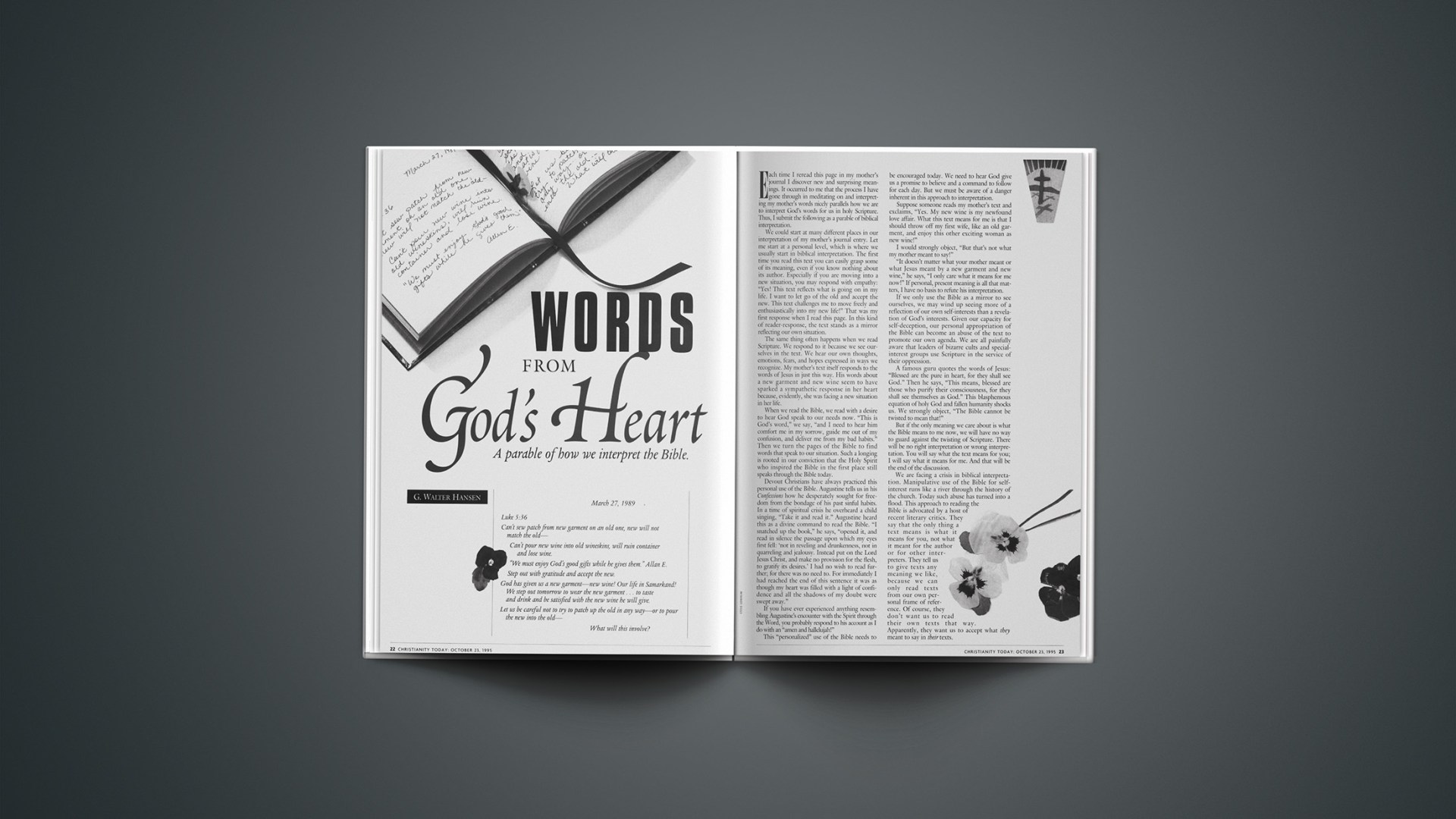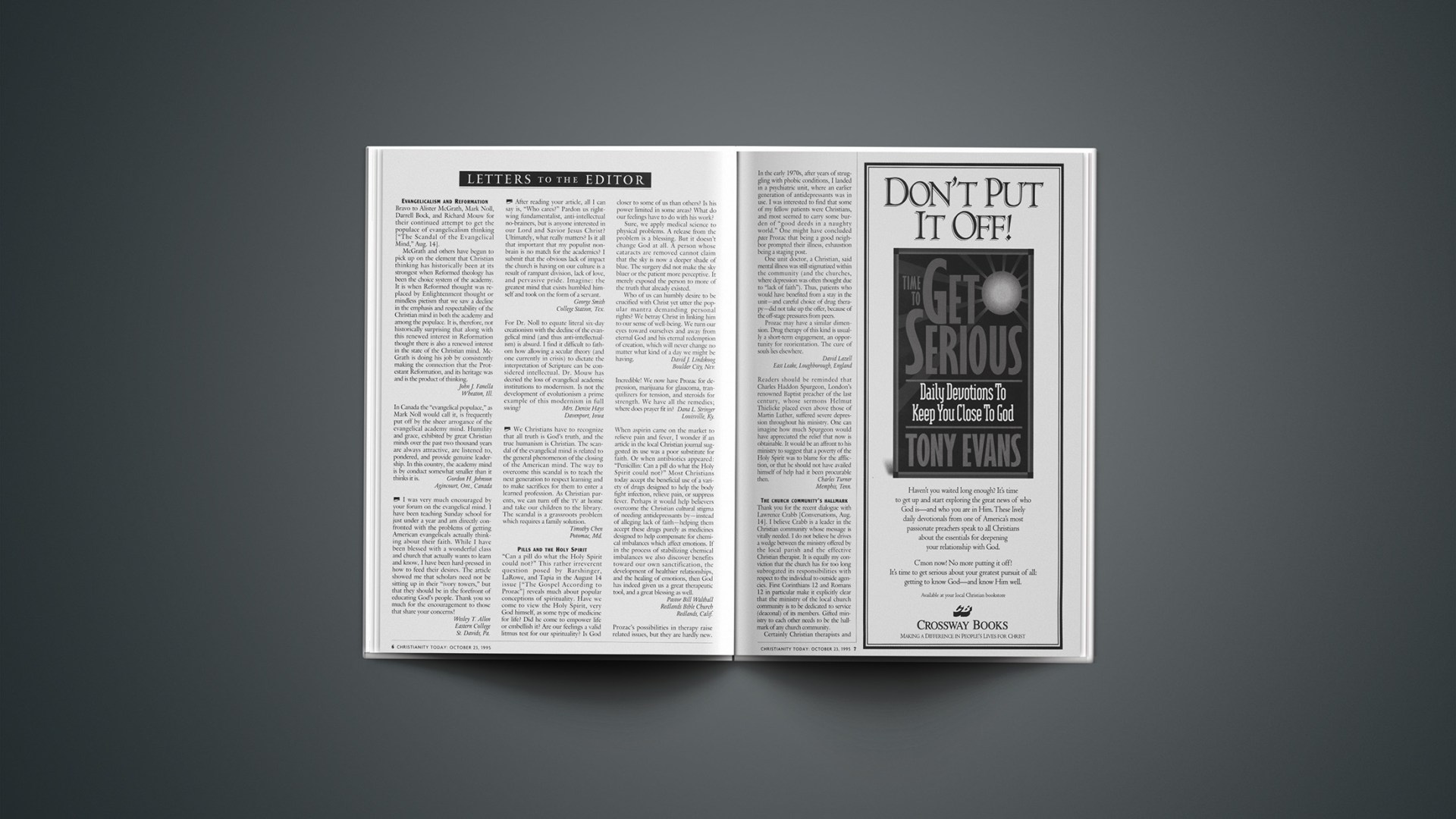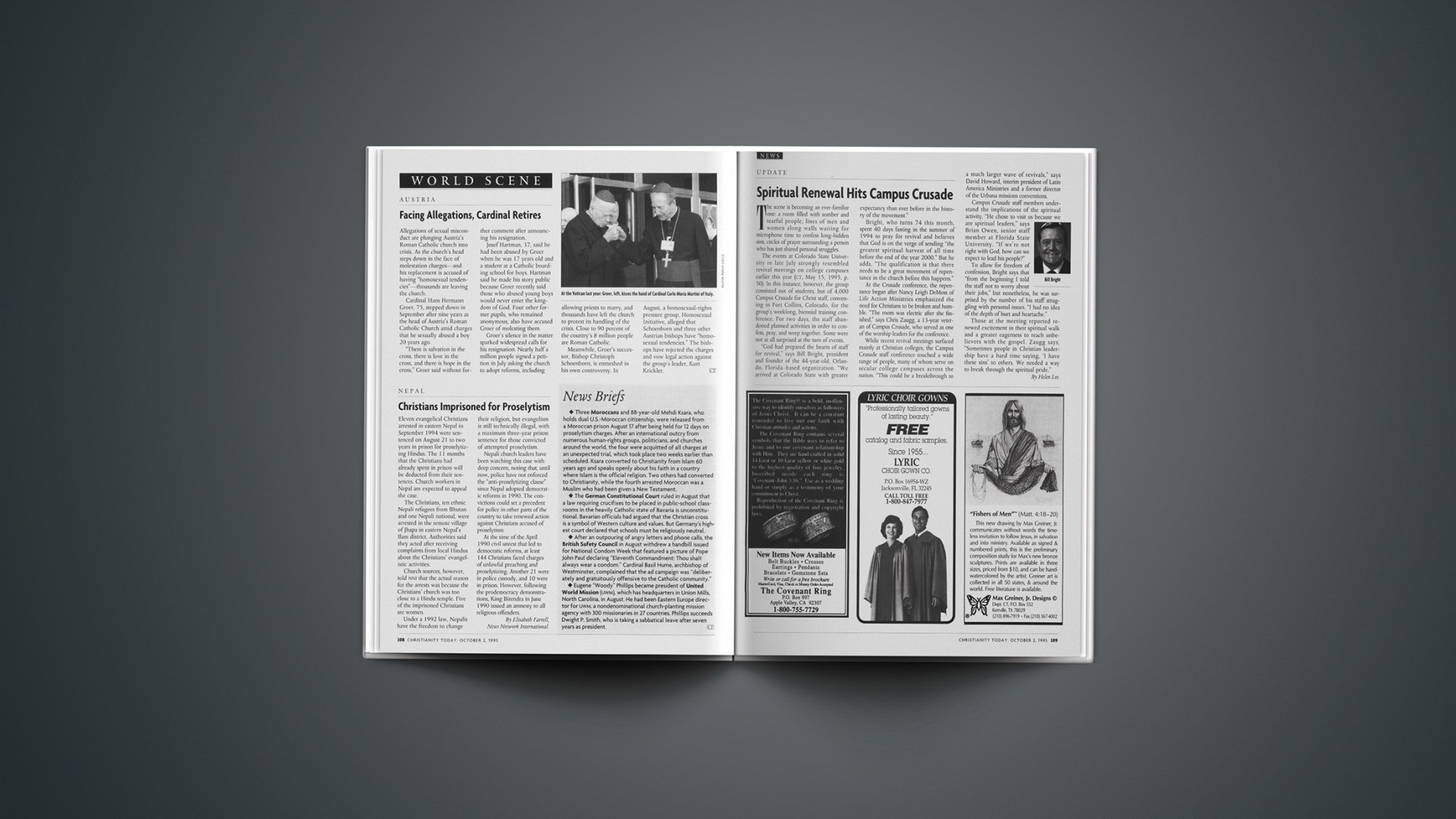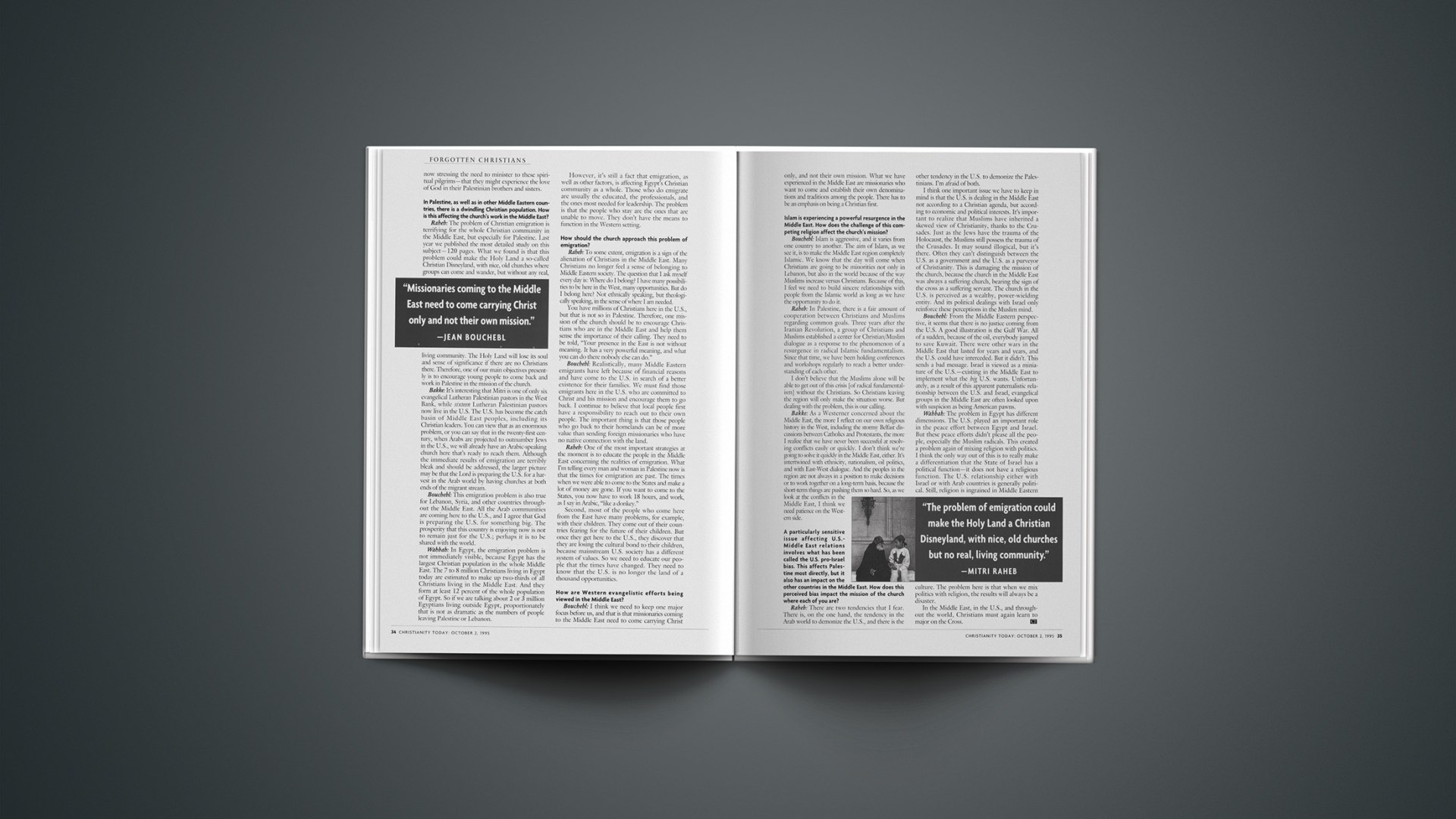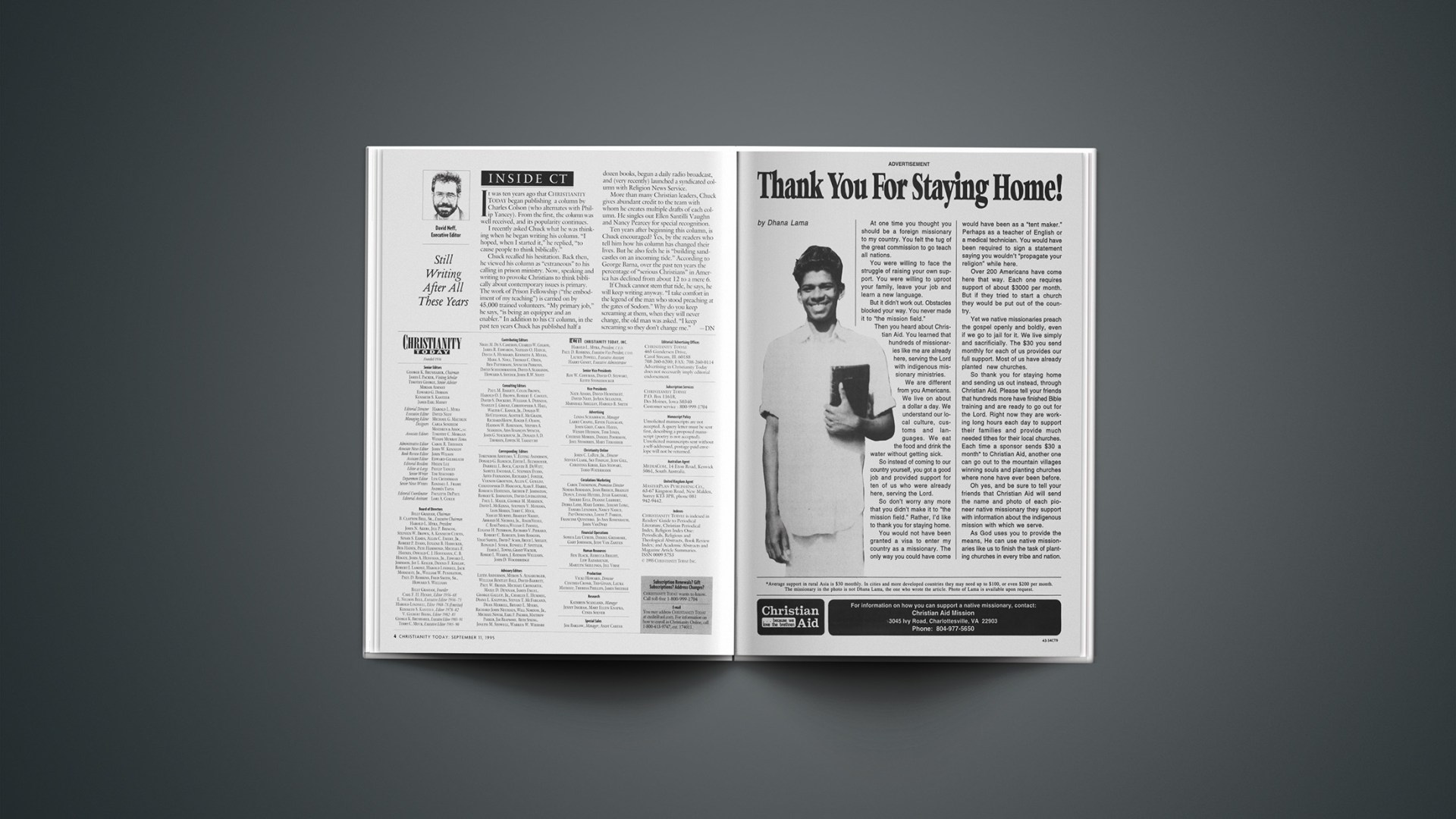Ginny Thornburgh’s mission to the disabled and the churches who forget them.
Her motto: “A ramp is not enough.” Ginny Thornburgh insists that people with disabilities have gifts that congregations need, and when their contributions are restricted, we all lose. As the director of the religion program of the National Organization on Disability, Thornburgh has spent many years working as an advocate for people with disabilities.
Bright-eyed and eager, Thornburgh greets visitors to her Washington, D.C., apartment with a gracious warmth that lets you know at once that you are at home. This reflexive sensitivity to others’ needs has been something of a theme.
She was only 23 when she married a man whose wife had been killed in a car accident, and though the three sons who were in the car survived, Peter, who was then four months old, suffered extensive brain damage. Richard Thornburgh went on to become governor of Pennsylvania and attorney general of the United States during the Reagan and Bush presidencies; the young son grew up to be Ginny’s inspiration, “Peter, a man of faith.”
How did you and Peter come to be family?
Well, I fell in love with his dad! Richard is such a man of honor that he didn’t kiss me until he had introduced me to all of his sons. This is who he was; he was first a father. When Richard and I were married in 1963, the boys were six, five, and three-and-a-half.
You obviously had a love for children, but it must have seemed like an extra challenge to take on a child like Peter.
It honestly wasn’t. When you’re 23, you feel as though you can do anything. The biggest step was finding out what motherhood means: the commitment, the energy, the concern, the dreams, the fears, the multiple roles. I think I just fell in love with this guy and figured that somehow all this would work out. I had so many people helping, the support of their first mom’s family, my own family, Dick’s mom, a whole team of people pulling for me.
For a long time, the reality of what it meant to have a disability in America didn’t hit me. I was very aware then of Peter’s needs—he was on seizure medication, had a place in his skull where the bone had been removed, and had to wear a helmet—but the landscape of disability beyond Peter, the implications of this for teenage years or adulthood, I didn’t see.
When did championing the spiritual concerns of people with disabilities become a priority for you?
Before my son Bill was born I had already begun learning how to be an advocate for Peter, had started to visit institutions where people with disabilities lived, and had begun to see a broader picture than Peter Thornburgh. But I had sitters so that I could do volunteer work, or spend time with the older boys. And so a sitter just came on Sunday morning, too. Richard, the older boys, and I would dress up and prepare for church, and Peter would just be there with his loving smile when we left to go worship. Then, when Bill was born, people started asking me when I’d bring him to church—and no one had ever asked that about Peter.
Life has certain defining moments, and that was one of them. There’s nothing angrier than a mother when one of her children has been ignored. But I knew it wasn’t just the church’s failure; I had neglected him as well. Then it occurred to me to ask, What does Peter think about God? Could he be wondering what the good of church is if it welcomes everybody except him? So, with some encouragement, the church organized a special-education class, and Peter began to be included.
And Peter actually participated in worship?
I don’t know when I realized that he wasn’t just going to church because it was required, but that it was one of the highlights of his week. He related to a loving Father in a deeper way than the rest of us were. He enjoys worship so much. He forgives much more easily than we do—a man who would have a right not to be forgiving. And there’s a peaceful quality about him, more than I sense in other people. He is utterly sure that there is a loving God.
You would like to make sure that other people with disabilities have the same opportunity for spiritual enrichment that Peter has had.
My central theme is that people with disabilities have gifts to bring to their churches. It’s not that we have an obligation, or should feel guilty if we don’t do it—none of that. It’s that they have gifts to bring. A corollary to that is that this person elicits gifts in other people. So these people are very important, and any congregation excluding people with disabilities is weakened.
I’m always trying to get away from a we/they approach. As soon as we talk in two-tier terms, one group dominates the other, rather than being a community of faith together.
We without disabilities are no finer, and certainly not loved by God any more, than people with disabilities. We all have different functions and different gifts.
What kinds of resistance do you encounter in helping a congregation open up?
I don’t think that exclusion occurs because people intend to be mean; I think they just don’t know what to do. They think they’ll say the wrong thing, touch the wrong part of the body. They have to be taught what to do. We need to learn about the person’s condition and then practice basic friendship, talking about the weather or sports. You don’t have to start on some profound level.
But the main thing is avoiding that we/they thinking. You and I don’t have disabilities now, but they could come at any moment—in a car accident, in a fall, or as part of the aging process.
Could much of what you say about welcoming people with disabilities apply to those who are aging as well?
Definitely. Look at your own church and you’ll notice older people who aren’t coming as much. They’re the backbone of our congregations in terms of attendance, volunteering, leadership, and donations. But very often they begin feeling the lighting is poor, the sound system is poor, it feels dangerous around the corners, it’s dark by the steps.
We need to create a safe, nonrushed feeling for the older members of our congregations.
How can we help people with disabilities feel at home?
One important way is by including them in leadership. I have now helped organize 11 conferences all across America to bring together religious leadership with disability leadership as an instrument for greater awareness. Peter speaks at some of these conferences; he delivers an eight-sentence speech.
It’s the same in our congregations. It’s not “How can we get them to come?” It’s “How can all of us together make this a place where people of all types will feel welcome?”
Just having people with disabilities in leadership automatically changes the way you speak. That’s why it’s critical to have them as head of the finance committee, or lector, or whatever is appropriate.
How has your own faith journey affected your work?
I think as I approached 50 I realized that I wanted to deepen my faith. I had been doing disability advocacy and loved it. But still something was missing. When I got the idea of combining disability work with congregations, that was what I needed.
I never remember not being a Christian. I’ve always been a person who’s had faith underneath me. The first time I thought of this image was when I was seven, and my father, who was in the steamship business, took me where I could see cargo being lifted in a great big net. I connected that to faith: the thing that’s under you and surrounding you, always there. No matter what the load or disability, it’s safe
By Frederica Mathewes-Green, a columnist for Religion News Service and World magazine and the author of Real Choices: Offering Practical, Life-Affirming Alternatives to Abortion (Questar).
To learn more about helping your congregation welcome people with disabilities, order That All May Worship, a 52-page illustrated handbook, by Ginny Thornburgh and Ann Rose Davie. Copies are $10 each, with discounts for multiple orders, from: National Organization on Disability, 910 Sixteenth St. NW, Suite 600, Washington, D.C. 20006.




